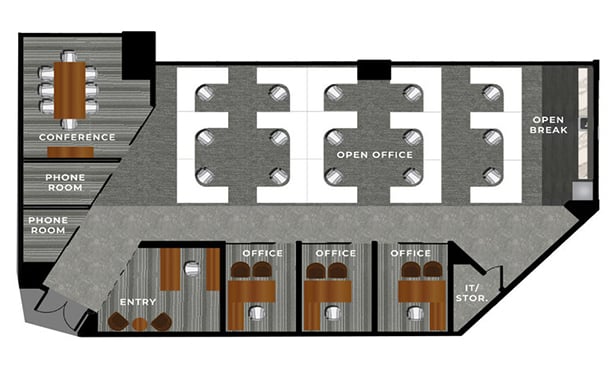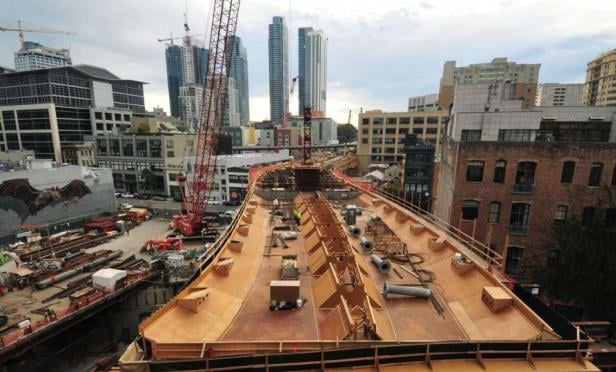
WASHINGTON, DC—Regardless of whether Hurricane Harvey or Irma was as devastating as each storm could have been for its region, the fact remains that both will have a near-term impact on the residential sector, and not only in the states of Texas and Florida. “The three-month average for single-family production has reached a post-recession high, but the months ahead may show volatility given that the building markets affected by Hurricanes Harvey and Irma represent about 14% of national production,” says Robert Dietz, chief economist with the National Association of Home Builders, commenting on federal data released Tuesday.
NAHB's latest monthly survey of builder confidence, issued Monday, reflects the uncertainty in the wake of the back-to-back storms in late August and early September. The confidence index in the market for newly-built single-family homes fell three points to a level of 64 in September from a downwardly revised August reading of 67.
“The recent hurricanes have intensified our members' concerns about the availability of labor and the cost of building materials,” says NAHB chairman Granger MacDonald, who's also chairman and CEO of Kerrville, TX-based builder MacDonald Cos. He adds, though, “Once the rebuilding process is underway, I expect builder confidence will return to the high levels we saw this spring.”
Also a concern is the combined impact of Harvey and Irma on the sales market. “While the full scope of the damage from hurricanes Harvey and Irma is still being assessed, it is clear the impact on the housing market will be considerable,” says Mark Fleming, chief economist at First American Financial Corp. “The Houston metropolitan area and the impacted Florida counties alone accounted for 8.0% of all existing US existing home sales in 2016.
“We expect existing-home sales to decrease in the short run, as loan closings are rescheduled and some borrowers with pending contracts withdraw their bids on damaged homes,” Fleming continues. “As recovery efforts move forward, the pre-hurricane shortage of construction workers will likely hamper the process of rebuilding efforts, and further limit the pace of new home construction, as the limited labor supply shifts away from new home construction to rebuilding efforts.”
In a report Tuesday, analyst Haendel St. Juste at Mizuho Securities USA revised the full-year 2017 and FY2018 estimates for earnings per share at the publicly traded homebuilders Mizuho covers. His revised estimates reflected “significant delays in closings” for the quarter that ends Sept. 30 in areas affected by the storms.
“We are also lowering our 2017/18 gross margin, SG&A margin and orders expectations, which collectively should pressure earnings through YE18,” wrote St. Juste. In view of Lennar Corp.'s greater exposure and expected disruption compared to its peers, he downgraded the Miami-based builder to “neutral,” notwithstanding “our admiration of its platform.”
Conversely, Mizuho is reiterating its “buy” rating on Toll Brothers, “given less expected disruption vs peers. Note that this is our initial 'guess-timate' of the storms' impact, suggesting more revisions in coming weeks as builders report earnings.”
Housing starts for August, which the Census Bureau reported on Tuesday, were down 0.8% year over year, for a seasonally adjusted annual rate of 1.18 million units. Within that total, single-family starts were up 1.8% Y-O-Y, while multifamily starts slid 6.5% from the year-ago period.
Going forward, says Kristin Reynolds, US economist with IHS Markit, “Weaker housing starts are expected next month. The states of Texas and Florida often rank first and second (or third) in the number of building permits and together the two states average nearly a quarter of national authorizations. With the pace of housing starts in July and August retreating, and a likely depressed September, we now anticipate that housing starts will fail to expand much, if at all, in the third quarter.”
That being the case, though, the Census Bureau said Tuesday there was little, if any, correlation between the August numbers and the severe weather. “Response for August from the jurisdictions affected by both hurricanes was not significantly lower than normal. Hurricane Harvey impacted construction activity in Texas only for the last week of the month and Hurricane Irma did not have an impact until September.”

WASHINGTON, DC—Regardless of whether Hurricane Harvey or Irma was as devastating as each storm could have been for its region, the fact remains that both will have a near-term impact on the residential sector, and not only in the states of Texas and Florida. “The three-month average for single-family production has reached a post-recession high, but the months ahead may show volatility given that the building markets affected by Hurricanes Harvey and Irma represent about 14% of national production,” says Robert Dietz, chief economist with the National Association of Home Builders, commenting on federal data released Tuesday.
NAHB's latest monthly survey of builder confidence, issued Monday, reflects the uncertainty in the wake of the back-to-back storms in late August and early September. The confidence index in the market for newly-built single-family homes fell three points to a level of 64 in September from a downwardly revised August reading of 67.
“The recent hurricanes have intensified our members' concerns about the availability of labor and the cost of building materials,” says NAHB chairman Granger MacDonald, who's also chairman and CEO of Kerrville, TX-based builder MacDonald Cos. He adds, though, “Once the rebuilding process is underway, I expect builder confidence will return to the high levels we saw this spring.”
Also a concern is the combined impact of Harvey and Irma on the sales market. “While the full scope of the damage from hurricanes Harvey and Irma is still being assessed, it is clear the impact on the housing market will be considerable,” says Mark Fleming, chief economist at
“We expect existing-home sales to decrease in the short run, as loan closings are rescheduled and some borrowers with pending contracts withdraw their bids on damaged homes,” Fleming continues. “As recovery efforts move forward, the pre-hurricane shortage of construction workers will likely hamper the process of rebuilding efforts, and further limit the pace of new home construction, as the limited labor supply shifts away from new home construction to rebuilding efforts.”
In a report Tuesday, analyst Haendel St. Juste at Mizuho Securities USA revised the full-year 2017 and FY2018 estimates for earnings per share at the publicly traded homebuilders Mizuho covers. His revised estimates reflected “significant delays in closings” for the quarter that ends Sept. 30 in areas affected by the storms.
“We are also lowering our 2017/18 gross margin, SG&A margin and orders expectations, which collectively should pressure earnings through YE18,” wrote St. Juste. In view of Lennar Corp.'s greater exposure and expected disruption compared to its peers, he downgraded the Miami-based builder to “neutral,” notwithstanding “our admiration of its platform.”
Conversely, Mizuho is reiterating its “buy” rating on Toll Brothers, “given less expected disruption vs peers. Note that this is our initial 'guess-timate' of the storms' impact, suggesting more revisions in coming weeks as builders report earnings.”
Housing starts for August, which the Census Bureau reported on Tuesday, were down 0.8% year over year, for a seasonally adjusted annual rate of 1.18 million units. Within that total, single-family starts were up 1.8% Y-O-Y, while multifamily starts slid 6.5% from the year-ago period.
Going forward, says Kristin Reynolds, US economist with IHS Markit, “Weaker housing starts are expected next month. The states of Texas and Florida often rank first and second (or third) in the number of building permits and together the two states average nearly a quarter of national authorizations. With the pace of housing starts in July and August retreating, and a likely depressed September, we now anticipate that housing starts will fail to expand much, if at all, in the third quarter.”
That being the case, though, the Census Bureau said Tuesday there was little, if any, correlation between the August numbers and the severe weather. “Response for August from the jurisdictions affected by both hurricanes was not significantly lower than normal. Hurricane Harvey impacted construction activity in Texas only for the last week of the month and Hurricane Irma did not have an impact until September.”
© Touchpoint Markets, All Rights Reserved. Request academic re-use from www.copyright.com. All other uses, submit a request to [email protected]. For more inforrmation visit Asset & Logo Licensing.








